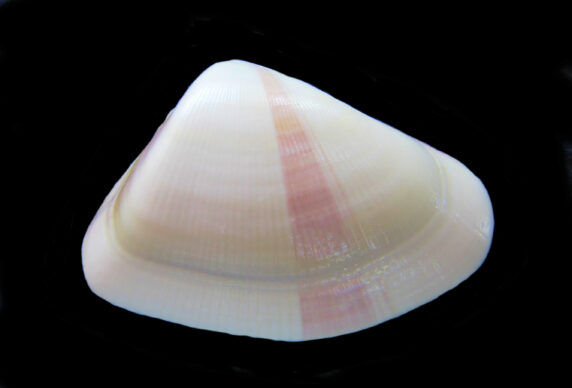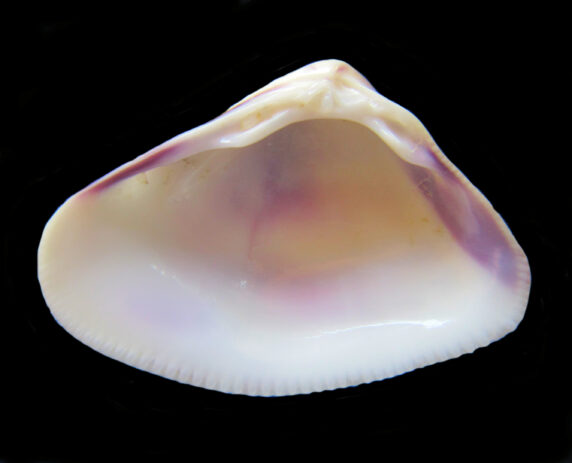Pitted Donax Clam Shell, Donax punctatostriatus

 Pitted Donax Clam Shell, Donax punctatostriatus. Size: 4.2 cm (1.7 inches) x 1.1 cm Shell collected from within the estuary of the Magdalena Bay complex, Baja California Sur, October 2018. Identification courtesy of Bob Hillis, Ivins, Utah.
Pitted Donax Clam Shell, Donax punctatostriatus. Size: 4.2 cm (1.7 inches) x 1.1 cm Shell collected from within the estuary of the Magdalena Bay complex, Baja California Sur, October 2018. Identification courtesy of Bob Hillis, Ivins, Utah.
The Pitted Donax Clam, Donax punctatostriatus (Hanley, 1843), is a bivalve mollusk that is a member of the Donacidae Family of Donax Clams. They are known in Mexico as coquina punteada. The shell has a triangular profile with a rounded ventral margin. The anterior of the shell is long and rounded and the posterior end appears chopped-off. The shell is inflated and about one and a half times longer than it is high. The exterior of the shell is sculpted with fine radial ridges and when viewed under magnification, small linear pits (punctuations) can be seen between the ridges, especially at the shell’s ends. These pits are what gives the shell its common and scientific names. The interior margin is finely crenulate (serrated). The exterior of the shell is shiny white to tan color, often with darker colored radial or concentric bands; the interior is white with purple wash or blotching, especially at the posterior end. Pitted Donax Clam Shells reach a maximum of 4.8 cm (1.9 inches) in length and 1.3 cm (0.5 inches) in height.
Pitted Donax Clams reside slightly buried beneath the surface of sand of exposed sandy beaches in the intertidal zone to depths up to 17 m (55 feet). The Pitted Donax Clam range from Cedros Island, Baja California to the Central Western coastline of Mainland Mexico; they are found throughout the Sea of Cortez.
A synonym is Donax sowerbyi.